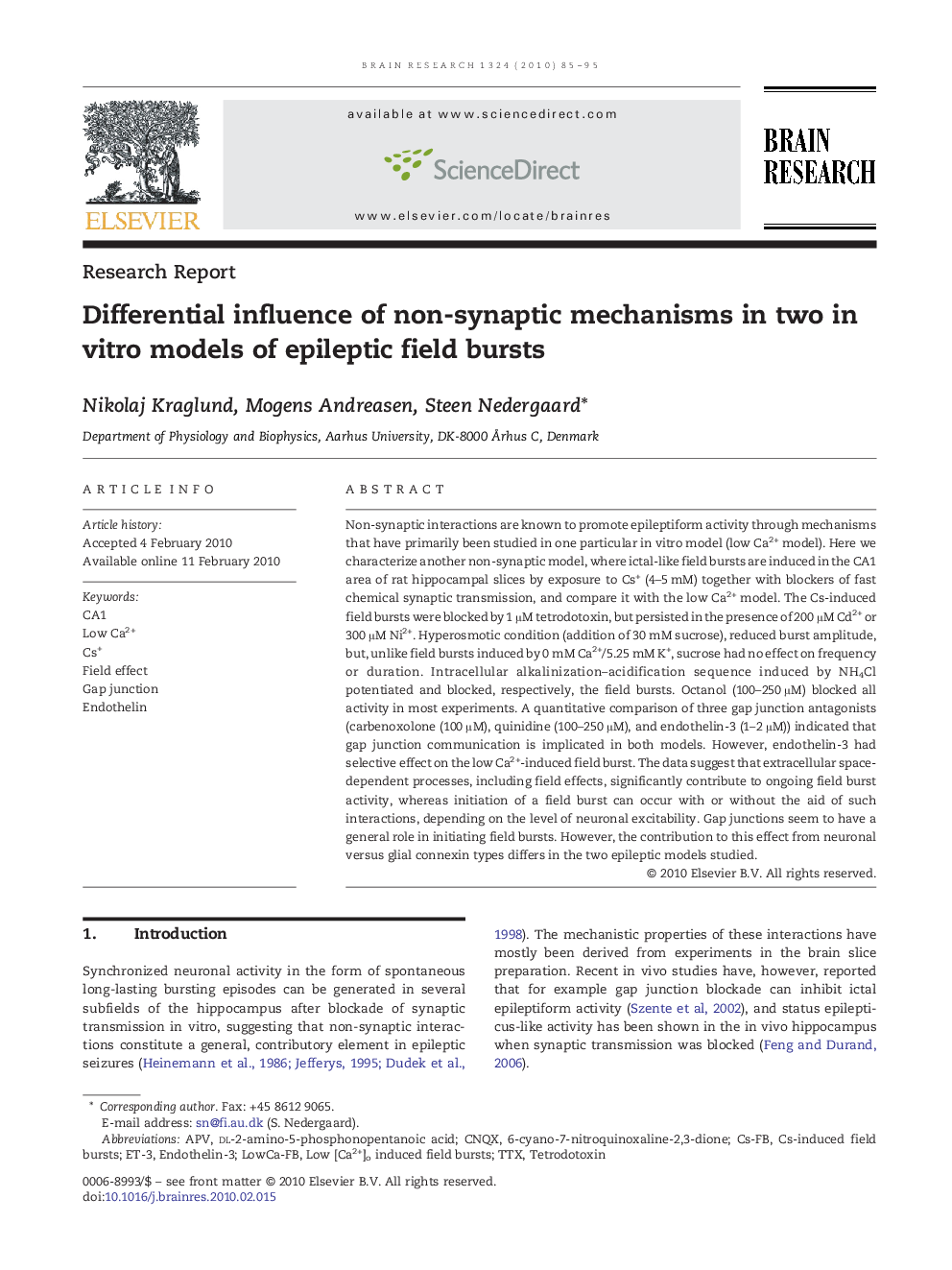| Article ID | Journal | Published Year | Pages | File Type |
|---|---|---|---|---|
| 4327217 | Brain Research | 2010 | 11 Pages |
Abstract
Non-synaptic interactions are known to promote epileptiform activity through mechanisms that have primarily been studied in one particular in vitro model (low Ca2+ model). Here we characterize another non-synaptic model, where ictal-like field bursts are induced in the CA1 area of rat hippocampal slices by exposure to Cs+ (4-5 mM) together with blockers of fast chemical synaptic transmission, and compare it with the low Ca2+ model. The Cs-induced field bursts were blocked by 1 µM tetrodotoxin, but persisted in the presence of 200 µM Cd2+ or 300 µM Ni2+. Hyperosmotic condition (addition of 30 mM sucrose), reduced burst amplitude, but, unlike field bursts induced by 0 mM Ca2+/5.25 mM K+, sucrose had no effect on frequency or duration. Intracellular alkalinization-acidification sequence induced by NH4Cl potentiated and blocked, respectively, the field bursts. Octanol (100-250 µM) blocked all activity in most experiments. A quantitative comparison of three gap junction antagonists (carbenoxolone (100 µM), quinidine (100-250 µM), and endothelin-3 (1-2 µM)) indicated that gap junction communication is implicated in both models. However, endothelin-3 had selective effect on the low Ca2+-induced field burst. The data suggest that extracellular space-dependent processes, including field effects, significantly contribute to ongoing field burst activity, whereas initiation of a field burst can occur with or without the aid of such interactions, depending on the level of neuronal excitability. Gap junctions seem to have a general role in initiating field bursts. However, the contribution to this effect from neuronal versus glial connexin types differs in the two epileptic models studied.
Keywords
Related Topics
Life Sciences
Neuroscience
Neuroscience (General)
Authors
Nikolaj Kraglund, Mogens Andreasen, Steen Nedergaard,
